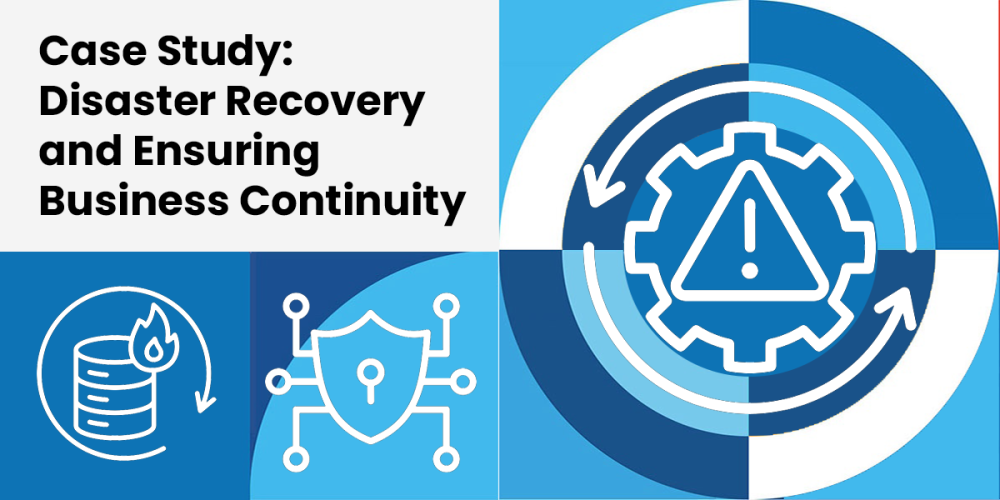
A significant number of businesses are not adequately prepared for major disruptions due to cyber attacks, natural disasters or technological failures. Approximately 75% of small and medium businesses (SMBs) do not have a disaster recovery plan.
Here are some best practices for disaster recovery planning (DRP), which will equip you with the necessary strategies to protect your business operations.
1. Start by Conducting a Comprehensive Risk Assessment
Understanding the unique threats your organization faces is the first step in crafting a robust DRP. Comprehensive risk assessments identify potential vulnerabilities, enabling targeted protection strategies.
- Evaluate both internal and external threats
- Prioritize risks based on probability and potential impact
- Regularly update risk assessments to reflect evolving threats
2. Clearly Define Recovery Objectives
Establish clear, measurable goals for recovery to focus your planning. Recovery Time Objective (RTO) and Recovery Point Objective (RPO) are critical metrics that guide the selection of recovery strategies.
- Determine acceptable downtime and data loss for each critical function
- Align DRP objectives with business continuity plans
- Regularly review objectives to align with business growth and changes
3. Implement Regular Data Backup Procedures
Data is the lifeblood of modern businesses. Regular, secure backup procedures ensure that no disaster leaves you without access to your vital information.
- Utilize automated backup solutions to minimize human error
- Store backups in diverse geographic locations for risk mitigation
- Test backup integrity and recovery processes regularly
4. Incorporate Cloud Solutions
Cloud computing offers scalable, flexible disaster recovery solutions. Leveraging cloud services can enhance your DRP with cost-effective redundancy and quicker recovery times.
- Choose cloud services that offer high availability and data integrity
- Utilize cloud-based backup for critical data and applications
- Employ cloud disaster recovery as a service (DRaaS) for essential scalability and flexibility
5. Ensure Comprehensive Communication Plans
Effective communication is critical during and after a disaster. A comprehensive plan details how your organization will communicate internally and externally.
- Designate a crisis communication team
- Establish clear communication channels and protocols
- Prepare templates for internal and external communications during emergencies
6. Create an Incident Response Team
A dedicated incident response team coordinates the execution of your DRP. This team takes the lead during a disaster, ensuring a cohesive and efficient response.
- Assign roles based on expertise and responsibilities
- Conduct regular training and simulation exercises
- Maintain clear lines of command and control
7. Regularly Test and Update Your DRP
Disaster recovery plans are living documents, requiring regular updates and testing to ensure effectiveness. Simulated disaster exercises reveal plan deficiencies, guiding continuous improvement.
- Schedule regular drills to simulate various disaster scenarios
- Update your DRP to address new threats and vulnerabilities
- Incorporate lessons learned into plan revisions
8. Adopt Best Practices for Data Encryption
In today’s threat landscape, securing your data during backup, transfer, and storage is non-negotiable. Data encryption is a cornerstone of any DRP, ensuring data privacy and compliance.
- Encrypt data at rest and in transit
- Utilize strong encryption standards and protocols
- Regularly update encryption keys and access controls
9. Engage with Key Stakeholders
Successful DRP implementation requires buy-in across the organization. Engaging with key stakeholders ensures alignment with business objectives and facilitates smooth execution.
- Involve stakeholders in DRP development and testing
- Communicate the importance and benefits of the DRP
- Assign clear responsibilities and accountability
10. Leverage Third-Party Expertise
Partnering with external experts brings additional insights and capabilities to your DRP. Expert vendors offer specialized services, from risk assessment to full-scale recovery operations.
- Select partners with proven expertise in disaster recovery
- Consider managed services for continuous DRP monitoring and support
- Collaborate on tailored recovery solutions to meet specific business needs
Contact us if you’d like to learn more, or have questions about disaster recovery planning.
